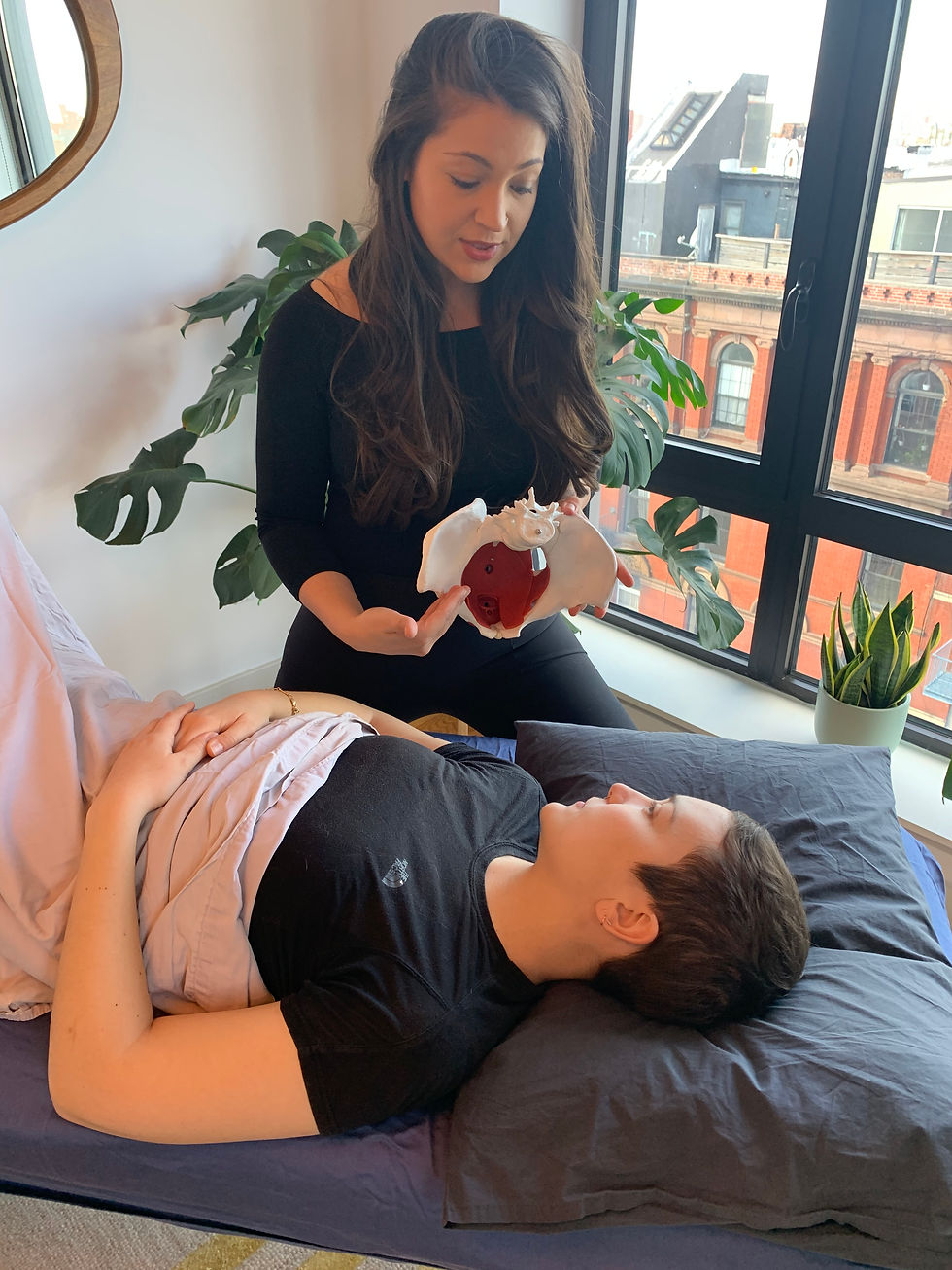Maximizing Recovery: The Benefits of Pelvic Floor Physical Therapy for Prostate Surgery Patients
- juliacrosenthal
- Sep 3
- 4 min read
September is Prostate Health Awareness Month, what does this have to do with Pelvic Floor Physical Therapy?

What is the prostate?
The prostate is a small, walnut-sized gland in the male reproductive system, located just below the bladder, above the pelvic floor muscles, and in front of the rectum. Despite its size, it plays several important roles in male health.
Fertility and sexual function: The prostate produces much of the fluid that makes up semen. During ejaculation, the prostate contracts in rhythm with the seminal vesicles and surrounding muscles, helping propel semen through the urethra.
Urination and continence: The prostate also contributes to urinary control. Because it sits right at the bladder outlet, changes to the prostate—whether from enlargement, surgery, or removal—can directly affect how the bladder and pelvic floor work together to maintain continence.
Understanding the prostate’s role helps explain why prostate cancer treatments (like surgery or radiation) often impact urinary and sexual function, and why the pelvic floor becomes such an important focus during recovery.
Prostate Cancer: Surgery and Treatment
Did you know that about 1 in 8 American men will be diagnosed with prostate cancer in their lifetime (Prostate Conditions Education Council)? When prostate cancer is detected, the most common treatment options include surgery, radiation, or medical therapies. One of the most common surgical approaches is called Robot-Assisted Laparoscopic Prostatectomy (RALP). In this procedure, the prostate is removed, and the external urethral sphincter becomes the main muscle responsible for controlling urination.
Here’s where the pelvic floor muscles play an important role. The external urethral sphincter works together with the pelvic floor to maintain bladder control. If these muscles are weak or uncoordinated, urinary leakage (incontinence) is more likely after surgery. The good news? Pelvic floor physical therapy—including targeted pelvic floor muscle training—can help. Research shows that strengthening these muscles before and after prostate surgery can significantly reduce the risk of urinary incontinence and speed up recovery.
What Does This Have to Do With Pelvic Floor Physical Therapy?
Yes—men have pelvic floors too!
Even though a Robot-Assisted Laparoscopic Prostatectomy (RALP) is often called “minimally invasive,” the procedure directly impacts the pelvic floor muscles. When the prostate is removed, these muscles play a much bigger role in bladder and sexual function. That’s why pelvic floor physical therapy can be an important part of recovery both before and after surgery.
Common symptoms men may experience after RALP include:
Urinary incontinence (leaking)
Urinary urgency and frequency
Constipation or bowel changes
Increased abdominal pressure
Erectile dysfunction
The good news is that all of these can be addressed with the right pelvic floor rehab program guided by a skilled pelvic floor physical therapist.
Pelvic PT Before Prostate Surgery (Pre-RALP)
Preparing your body before surgery can make a big difference. By strengthening the pelvic floor muscles and surrounding support system ahead of time, men may reduce their risk of post-operative urinary incontinence and erectile dysfunction.
Pre-surgery pelvic floor therapy also gives you:
Awareness of the muscles most affected by surgery
Confidence in how to engage them correctly
Peace of mind knowing you have tools to support recovery
This preparation makes the transition into healing smoother and less stressful.
Pelvic PT After Prostate Surgery (Post-RALP)
RALP is still a major surgery—and even if you can’t see the muscles that were affected, they’ve been through a lot. Up to 90% of men experience urinary incontinence immediately after surgery.
After an initial healing period of about six weeks (as cleared by your physician), it’s the right time to begin working with a trained pelvic floor physical therapist. At Empower PT, this includes:
Assessing pelvic floor muscle strength and coordination
Evaluating the core, glutes, and hips as supportive players
Teaching proper pelvic floor activation (many men are simply told to “do Kegels,” but doing them correctly and coordinating with other muscles is the key).
This individualized approach can help men regain bladder control faster and feel more confident returning to daily life.
What Patients and Physicians Are Saying
“I have been fully continent since the completion of my pelvic floor training with Aslyn. I am indebted to Aslyn for the care and treatment provided during a difficult time in my life and know that she shows that commitment to all her patients.”
Roger Fielding, patient
“I have witnessed gratifying success among patients with long-standing (>1 yr) post-operative incontinence who had never had prior pelvic-floor therapy beyond the Kegel exercise recommendations at the time of surgery.”
Dr. Matthews, Surgeon
References
Campbell, S. E., Glazener, C. M., & Hunter, K. F. (2012). Conservative management for postprostatectomy urinary incontinence. Cochrane Database of Systematic Reviews.
Ficarra, V., Novara, G., Rosen, R. C., Artibani, W., Carroll, P. R., Costello, A., ... & Montorsi, F. (2012). Systematic review and meta-analysis of studies reporting urinary continence recovery after robot-assisted radical prostatectomy. European Urology, 62(3), 405–417.
Stafford, R. E., Coughlin, G., Hodges, P. W. (2013). Retraining motor control of pelvic floor muscles after prostate cancer surgery. Urologic Oncology, 31(7), 1461–1468.
MacDonald, R., Fink, H. A., Huckabay, C., Monga, M., & Wilt, T. J. (2007). Pelvic floor muscle training to improve urinary incontinence after radical prostatectomy: A systematic review. BJU International, 100(1), 76–81.



Comments